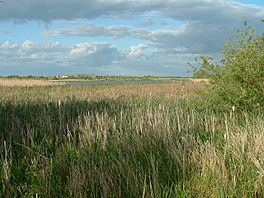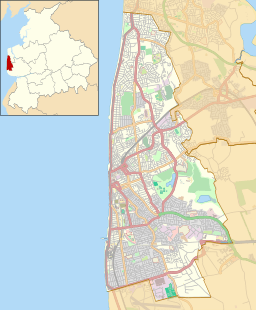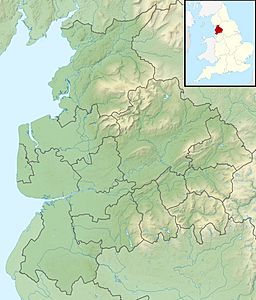Marton Mere Local Nature Reserve facts for kids
Quick facts for kids Marton Mere |
|
|---|---|

Marton Mere
|
|
| Location | Lancashire, England |
| Coordinates | 53°48′34″N 2°59′59″W / 53.8094°N 2.9998°W |
| Type | mere |
Marton Mere is a special place in Blackpool, Lancashire, England. It's a type of lake called a mere. This area is also a Local Nature Reserve, which means it's protected.
You can find Marton Mere near the Blackpool areas of Marton and Mereside. It's also close to the village of Staining. This beautiful spot is recognized as a Site of Special Scientific Interest. This title means it's very important for its natural features.
Contents
What is Marton Mere?
Marton Mere is a glacial freshwater lake. This means it was formed by huge sheets of ice, called glaciers, long ago. As glaciers moved, they carved out hollows in the land. When the ice melted, these hollows filled with water, creating lakes like Marton Mere.
How Big Was the Mere?
Originally, Marton Mere was much larger than it is today. It used to be about 3 miles (4.8 km) long and 1 mile (1.6 km) wide. Imagine a lake that big! Over time, people changed the landscape around the mere.
Why Did the Mere Shrink?
During the 18th century, people started to drain the lake. They wanted to create more land for farming. This process slowly made the mere smaller. Around 1850, a channel called Main Dyke was dug. This channel helped drain even more water away from the mere.
A Home for Wildlife
Today, Marton Mere is a fantastic place for many different plants and animals. It has a mix of important habitats. These include open water, where birds can swim and fish live. There are also tall reed beds, which are like natural hiding spots for many creatures.
Different Habitats at the Mere
The reserve also has areas of grassland. These grassy fields are perfect for insects and small mammals. You can also find small areas of woodland and scrub. These provide shelter and food for birds and other animals.
Visiting Marton Mere
Marton Mere is a great place to explore nature. It's right next to the Marton Mere Holiday Village. This makes it easy for visitors to enjoy the reserve. It's a wonderful example of how we can protect natural spaces.



